I have fourteen ariocarpus plants, the oldest going back to 2012.. I can remember losing two along the way, but the ones I have now are doing well. Nine of them have bloomed this fall, three have bloomed twice, and it has been fun to go into the greenhouse and be greeted by these flowers.
Ariocarpus are considered a subtropical plant. They are a succulent plant because they do store water, but they are in the family Cactaceae because they do have areoles, and as seedlings, do have spines which seem to go away as the plant matures. The flowers come from the woolly apex, and that wool sometimes obscures the buds. Then when they bloom, it is a nice surprise I didn’t see coming. Except for Ariocarpus fissuratus, all are native to Mexico. A fissuratus grows around the Rio Grande in South Texas as well into Mexico and is being endangered by poachers who dig up whole colonies, leaving none to flower, seed, and reproduce. All ariocarpus are slow growers, which also means they take a long time to get old enough to bloom and produce seeds to grow more plants. Definitely a cause and effect that poachers don’t care about.
On September 27, I walked into the greenhouse to be greeted by a bloom from my newest specimen, Ariocarpus fissuratus Godzilla, a hybrid developed in Japan. The body of the plant is darker green and has bumps and ridges, which makes it a little different to the regular fissuratus, and the flower is pink with a hint of stripes. Then on October 2, it bloomed again.
Ariocarpus fissuratus always has buds hiding in the wool, like this. You really can’t tell for sure if flowers are coming out of there or when. But when the wool gets fuller and fluffier, you know flowers are indeed coming.
The Ariocarpus retusus furfuraceus buds are a bit more obvious, but are also somewhat hidden in the wool. And other varieties have different variations of the wool, but they all have some.
Here are the flowers after these buds opened on another retusus.
Through the whole month of October and into November I had flowers. These are all retusus varieties.
Ariocarpus agavoides.
Ariocarpus fissuratus.
Ariocarpus bravonaus.
Ariocarpus fissuratus. This is the one with all the wool in the earlier picture.
This is the Godzilla hybrid blooming again. This picture shows more of the stripes in the flower.
Ariocarpus Kotschoubeyanus is a tiny plant! You will notice you can’t see the plant for the flower. Mine is a young plant, but even when it gets older, it won’t be as big a plant as some of the other varieties. And it has the striped flower as well.
The second bloom on the Ariocarpus agavoides. This is also not as large a plant as some of the others. I have had this one since 2018, and it hasn’t grown much. But eventually I think it will get a little bigger.
As November has come and almost gone, my other five specimens have not bloomed, and I don’t see telltale wool forming for later flowers. so I guess they just aren’t ready yet for whatever reason. So, next year I will start checking in late August to see who will be the first to surprise me with flowers.
What fun!
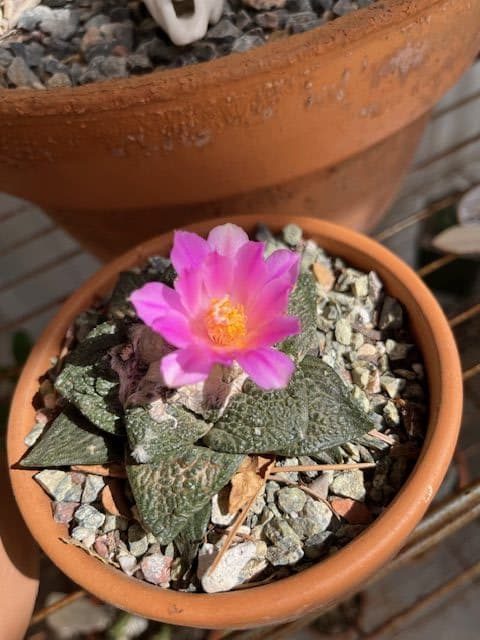
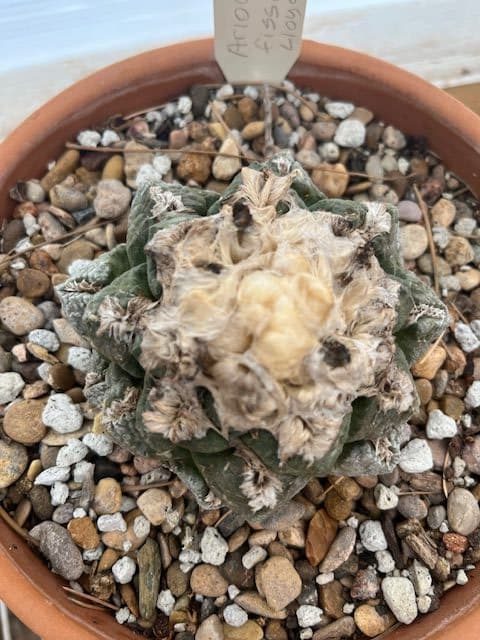

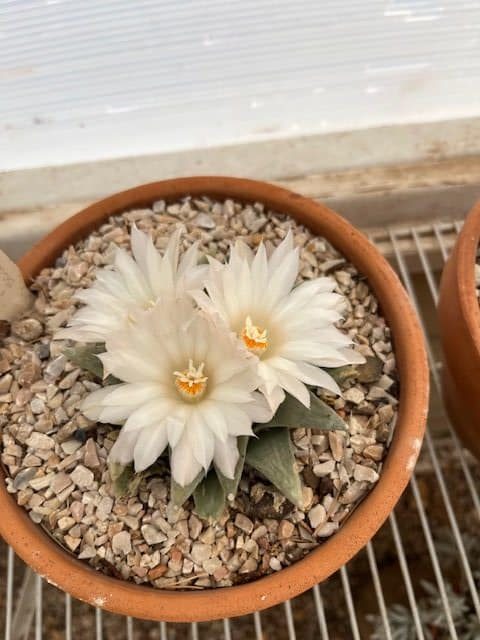


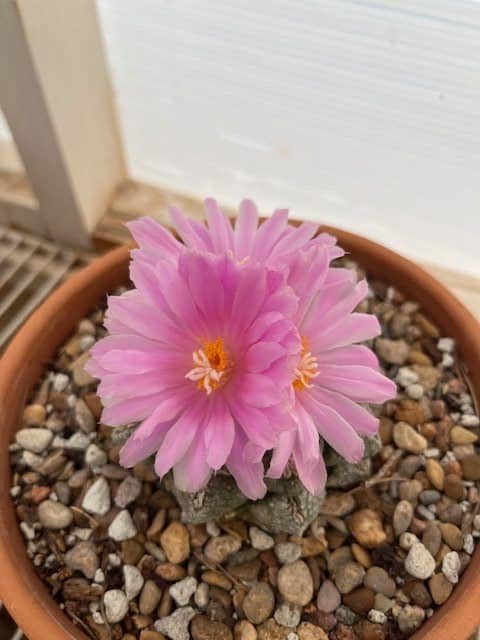
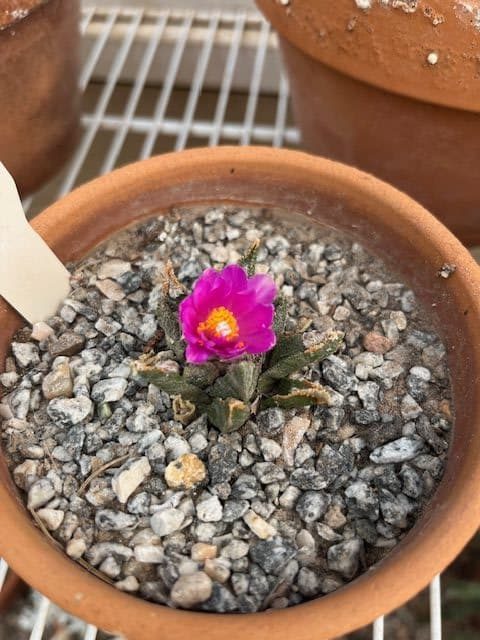
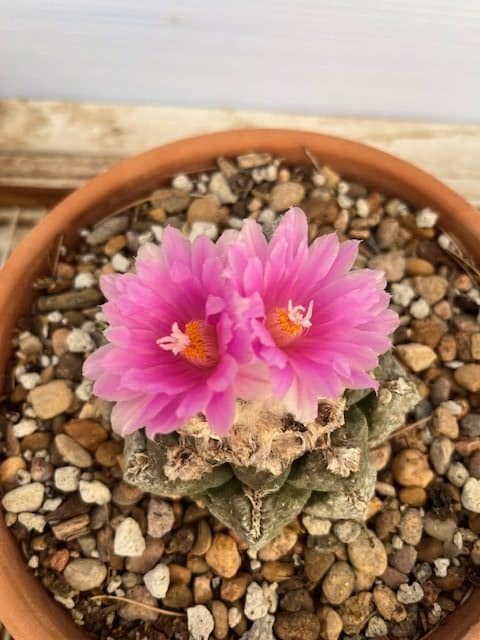

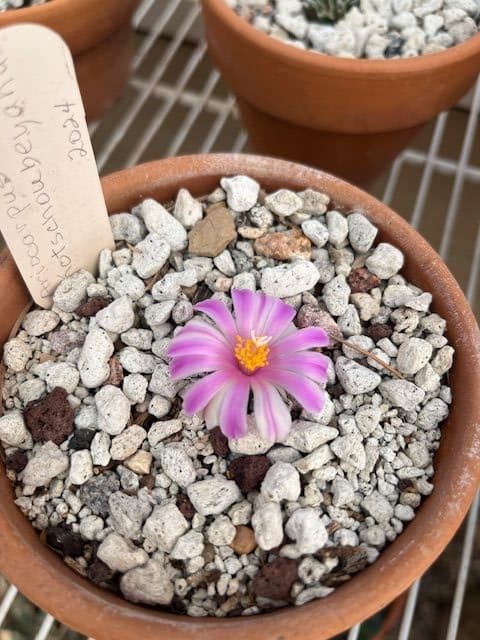

Recent Comments